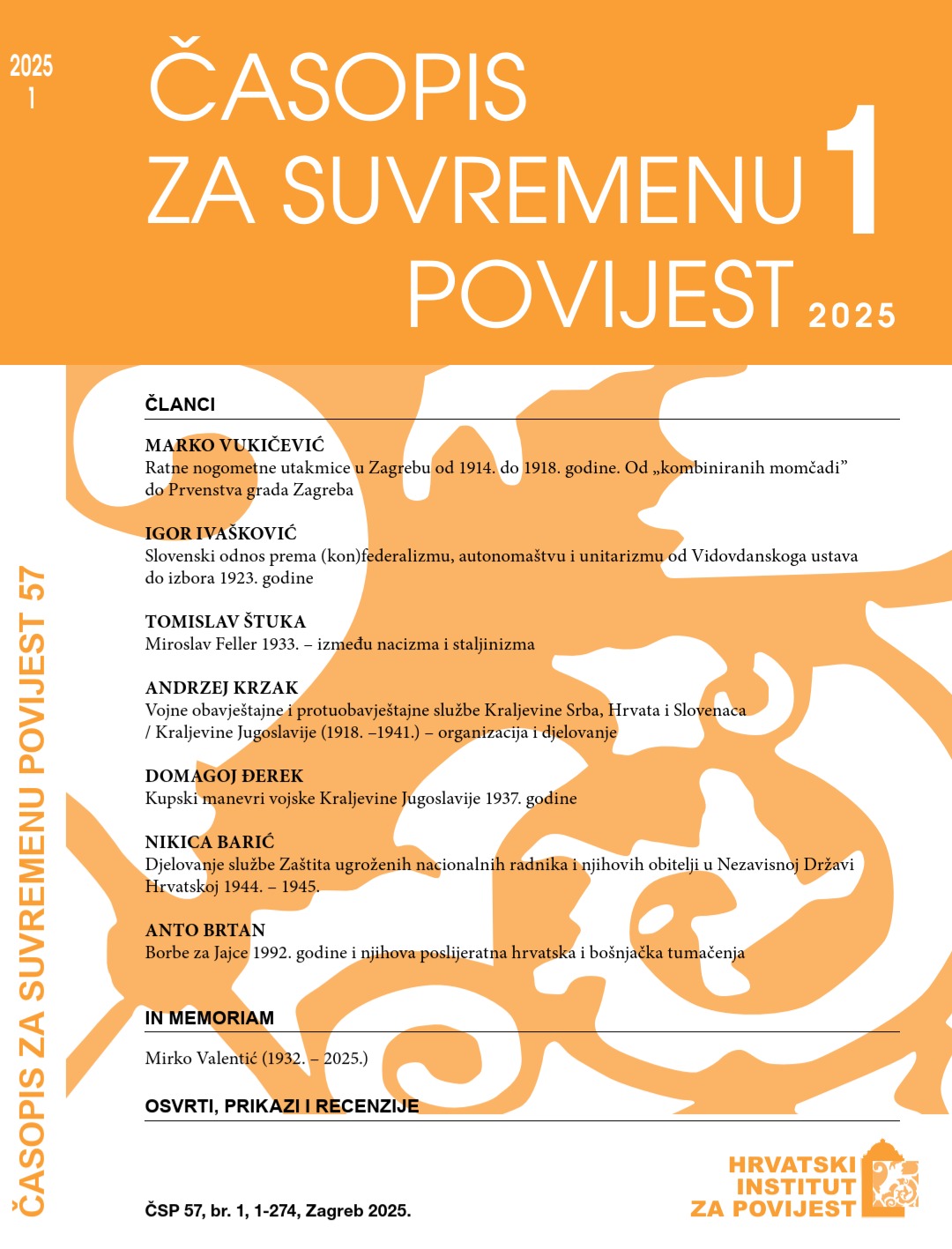Miroslav Feller 1933 – Between Nazism and Stalinism
DOI:
https://doi.org/10.22586/csp.v57i1.35324Keywords:
Miroslav Feller; Adolf Hitler; Soviet Union; Nazism; Stalinism; Miroslav Krleža; „Hitler and the Future“Abstract
The paper discusses a specific segment of the biography of Miroslav (Fritz) Feller (1901-1961), advertising expert, poet, publicist, former medical student from Zagreb and son of pharmaceutical industrialist Eugen Viktor Feller. During his years in Berlin between 1929 and 1932, which were characterized by the approaching end of the Weimar 'civilization', he attempted to establish himself in the advertising and intellectual circles of Weimar Germany by founding the Institute for Applied Psychology, publishing the magazine Werbeberater: Zeitschrift für Werbepsychologie and popularizing the application of psychoanalytic concepts in advertising theory and practice. Following this, Feller visited the USSR in October 1932, thus joining a large group of European intellectuals charmed by utopian vision of the "first socialist state". Returning from the Soviet Union in February 1933, Feller settled in Vienna, a city in which he had already lived in between 1922 and 1924 and in which he was influenced by psychoanalytic ideas. In the 1920s he collaborated on the left-wing paper Der Abend and found himself in the Comintern's Balkan Federation circles while participating in the activities of the anarchist groups of the former metropolis of the imploded Habsburg state, from whose periphery he himself came. Encouraged by the increasingly severe Nazi regime in Germany, Feller publishes the book "Hitler und die Zukunft" in Vienna, in March of 1933. Feller writes this critical study of Hitler's rise to power and the capture of the German proletarian masses in the manner of an excellent (psycho)political analyst of the German and European reality of the time. Based on his personal insights, he compares this with the Soviet actuality. Although written from a "left" perspective, the study criticizes both the Soviet regime and the KPD's Comintern-aligned policies, arguing that these failed to advance German workers’ interests and inadvertently aided the Nazis’ rise to power. In his study, Feller draws attention to a specific intellectual-political "zwischen" experience present in that part of the "left" at that time, the experience of being trapped between the imminent Nazi darkness and disillusionment with the reality of Soviet Russia.
Downloads
Published
Issue
Section
License
Copyright (c) 2025 authors and journal

This work is licensed under a Creative Commons Attribution-NonCommercial 4.0 International License.
Copyright holders are the publisher Croatian Institute of History and the authors. Journal of Contemporary History is an Open Access journal. Users are allowed to read, download, copy, redistribute, print, search and link to material, and alter, transform, or build upon the material, or use them for any other lawful purpose as long as they attribute the source in an appropriate manner according to the Creative Commons licence CC BY-NC. The papers published in Journal of Contemporary History can be deposited and self-archived in the institutional and thematic repositories providing the link to the journal's web pages and HRČAK. Journal does not charge article processing charges (APC). The editors assume no responsibility for statements of fact or opinion made by contributors.




